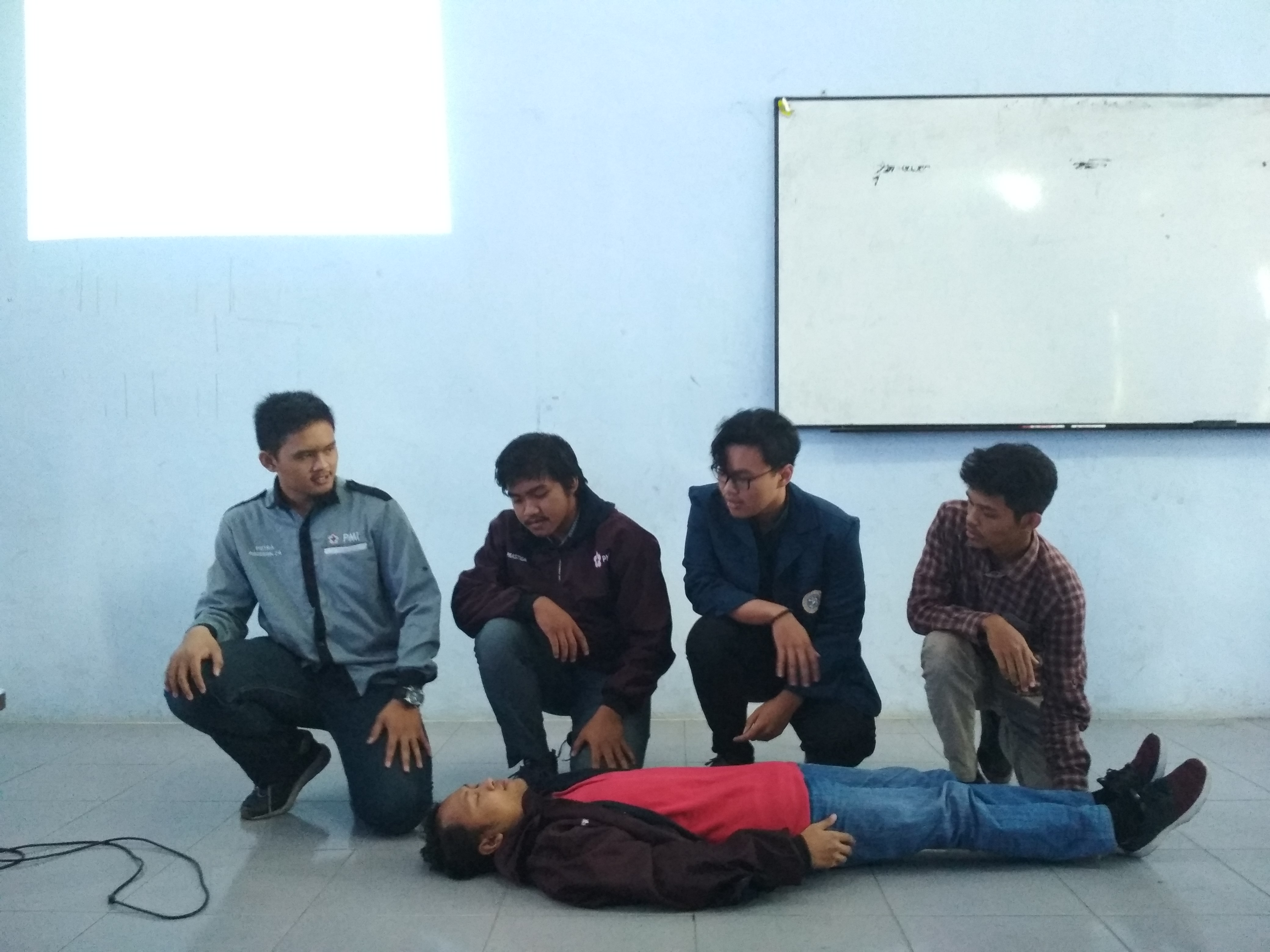UNAIR NEWS – Voluntary Corps of Indonesian Red Cross Sub Unit Study Program Off Main Campus (PSDKU) in Banyuwang held training activities for committees medical team on Sunday, May 26. The activity, which took place in room B 202, consisted of 2 sessions of the material presented by KSR PMI Sub Unit UNAIR Surabaya.
In the first session, Banatullariza as Vice Commander of KSR PMI Sub-Unit UNAIR Surabaya explained the material regarding the emergency. Starting from how to recognize the type of case, general symptoms and signs, emergency case relief, and how to check vital signs of the victim are very important things to do.
“This vital sign is very important to know whether the victim is conscious or not. This can be done by doing ABC, namely Airway (checking the respiratory path), Breathing (feeling the breath), and Circulation (checking radial pulse), “he explained.
When you want to do first aid, you must pay attention to 3A assessment: secure yourself, secure the environment, and secure victims. Thus, the most important thing is to secure yourself before the victim.
“Even though they have the knowledge to help, but when the situation is not safe to help the victim, it is not recommended to help alone. Immediately contact medical assistance to help the victim, “he added.
Furthermore, Dara explained that there were 3 priorities in doing first aid, such as victim remained alive, prevented disability, supported comfort for healing.
In the second session, Syaifullah Putra as KSR Commander of Sub-Unit PMI UNAIR Surabaya delivered material on evacuation. Putra explained what things should be done in carrying the victims. If you do mistakes in terms of evacuation, it can worsen the victim situation.
“The best way to evacuate the victim is to straighten the body (relying on the strength of the limbs, not the back), bend one knee, try to position the feet that are perpendicular to the position of the victim’s head. Try to help the helper close to the victim’s body, “he explained.
Furthermore, he also explained that all the fingers used to lift the victims’ bodies, then lifted them gradually with one command. In that case, he continued, those who were entitled to give command were helpers who were in a position near the victim’s head.
In addition, there are several types of evacuations that are commonly carried out for the victim. These include pulling arms, holding, carrying, evacuating using a stretcher, evacuating without stretchers, and others.
“In evacuating, try to make the victim feel comfortable. Convenience is done by reducing the movement of the victim. Because the core of this evacuation is providing comfort to patients, “he concluded (*)
Author: Athiya Adibatul Wasi
Editor: Nuri Hermawan





